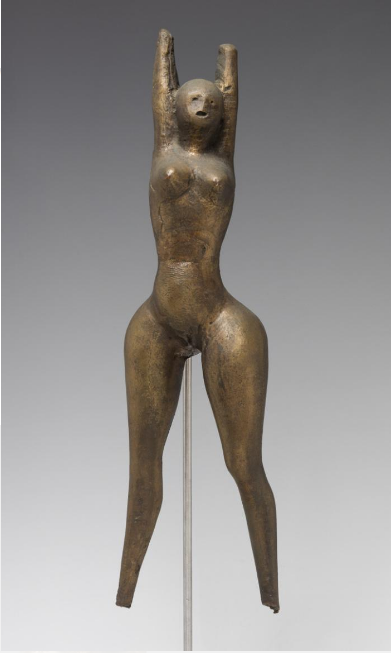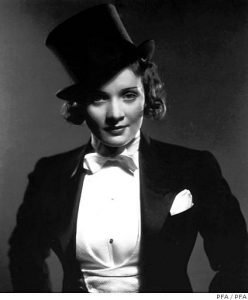Reg Butler (1913-1981), Doll (1955)
Butler was fascinated with the female body; in his later works he focused on sculpting young women. The bodies of the women are extremely contorted with the intention of emphasizing the sensuousness of the woman’s anatomy. This sculpture, hands and feet, objectifies the body, much as Barnes does in her 1936 novel, Nightwood. Nightwood was one of the earliest texts to present in detail homosexuality between women. This passage from her book reduces the woman from a person to a body of the earth, with emphasis on her flesh and form, much as Butler does in his sculpture. Django Reinhardt was a revolutionary musician at the time of great popularity – his mysterious melody heard in the video below, “Echoes of Spain,” seems to hint at all things taboo and unknown. This mystique was something that actress Marlene Dietrich capitalized on in her 1930 film Morocco, in which she played a provocative cabaret singer who performs in a man’s white tie and kisses another woman.
“The perfume that her body exhaled was of the quality of that earth-flesh, fungi, which smells of captured dampness and yet is so dry, overcast with the odour of oil of amber, which is an inner malady of the sea, making her seem as if she had invaded a sleep incautious and entire. Her flesh was the texture of plant life, and beneath it one sensed a frame, broad, porous and sleep-worn, as if sleep were a decay fishing her beneath the visible surface. About her head there was an effulgence as of phosphorous glowing about the circumference of a body of water – as if her life lay through her in ungainly luminous deteriorations – the troubling structure of the born somnambule.”
Djuna Barnes, Nightwood
Categories: Spectacle, The Body, The New Woman




